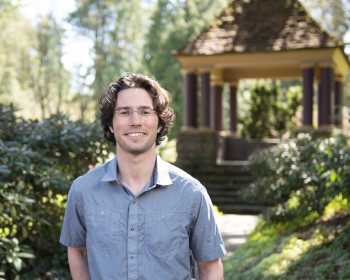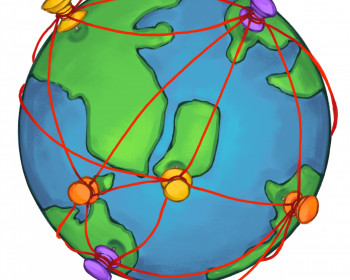Biology Student Explores the Forests of the Future

Pruiett’s efforts are the product of her ten-week summer fellowship with the American Conifer Society. A biology major from Yakima, Washington, Pruiett is hardly a novice when it comes to scavenging for ecological data. One of her first college courses was Investigations in Ecology and Environmental Science with Associate Professor of Biology Margaret Metz, who would later become Pruiett’s academic advisor and research mentor.
“For the first time I realized there was more to biology than just cells,” Pruiett says. “I fell in love with the idea that you can study really large phenomena that drive the shape of landscapes and the shape of the world.”
By the second semester of her first year, Pruiett was working in Metz’s lab and studying the ways in which pathogens can affect the diversity of seedling generation in old-growth forests. This prior research, funded by the National Science Foundation (NSF), laid the groundwork for Pruiett’s current project, which will become the subject of her senior honors thesis in the fall, guided by the mentorship of Sr. Professor of Natural Sciences Paulette Bierzychudek.
With aid from the John S. Rogers Science Foundation, Pruiett is now looking at the species composition of trees in urban and rural parks to investigate whether there is a difference in regeneration.
“It’s been established that urban forests have fewer young trees than rural forests,” Pruiett explains. “But it’s unknown why that is.”
Seedling trees are less than an inch tall, but they hold a mirror to what the forest will look like in generations to come. By focusing on the way that nurse logs – which feed and nurture seedling trees – may provide a more moist substrate for germinating seeds, Pruiett will be able to see if adding down wood to urban forests could aid regeneration.
“Even if I don’t come up with a yes or no, it’s the process of going out and working every day and putting so much thought and energy into it,” she says. “I’m excited for the answers.”
For Pruiett, part of the thrill comes from the prospect of distilling her findings for a non-scientific audience.
“We’re the evergreen state. This decreased regeneration could change the species composition of our iconic conifer parks,” she says. “It’s been cool to think about the way that we as scientists engage with the community and how we can make it as interesting and accessible to as many people as possible.”
More Newsroom Stories
Public Relations is located in McAfee on the Undergraduate Campus.
MSC: 19
email public@lclark.edu
voice 503-768-7970
Public Relations
Lewis & Clark
615 S. Palatine Hill Road MSC 19
Portland OR 97219

